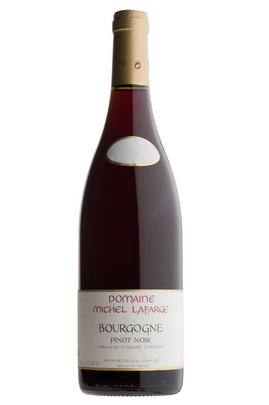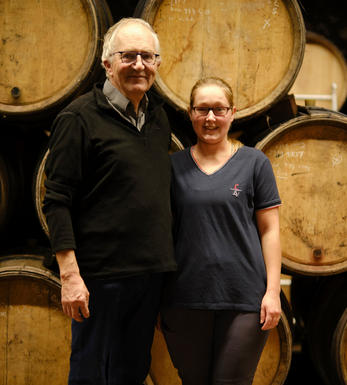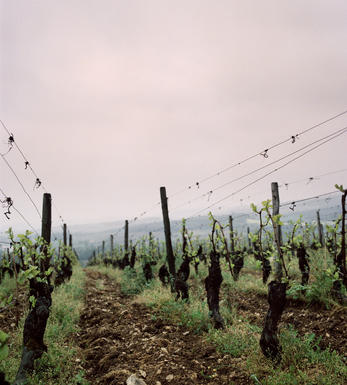
2012 Bourgogne Pinot Noir, Domaine Michel Lafarge

About this WINE

Domaine Michel Lafarge
Following the sad passing of Michel in January 2020, his son Frédéric and granddaughter Clothilde maintain his legacy – producing some of the greatest wines in Volnay.
There’s nothing modern in the winemaking at Domaine Michel Lafarge, though the meticulous care for their biodynamically farmed vineyards puts them at the forefront of viticultural practices.
In the vineyard
Vineyard work is usually assisted by the estate’s hens, who eat up any lurking pests. In ’14, Frédéric and Chantal (maiden name Vial) Lafarge decided to buy some Beaujolais vineyards, starting in Fleurie before expanding into Chiroubles and the Côte de Brouilly. The vineyards had all previously been run organically, and that continues under the Lafarge-Vial stewardship – along with biodynamic treatments.
In the winery
The grapes are destemmed and vinified traditionally; very little new oak is used in the cellar.

Bourgogne Rouge
Bourgogne Rouge is the term used to apply to red wines from Burgundy that fall under the generic Bourgogne AOC, which can be produced by over 350 individual villages across the region. As with Bourgogne Blanc and Bourgogne Rosé, this is a very general appellation and thus is hard to pinpoint any specific characteristics of the wine as a whole, due to the huge variety of wines produced.
Around 4,600 acres of land across Burgundy are used to produce Bourgogne Rouge, which is around twice as much as is dedicated towards the production of generic whites.
Pinot Noir is the primary grape used in Bourgogne Rouge production, although Chardonnay, Pinot Blanc, Pinot Gris and in Yonne, César grapes are all also permitted to make up the rest of the wine. These wines tend to be focused and acidic, with the fruit less cloying than in some New World wines also made from Pinot Noir, and they develop more floral notes as they age.
Although an entry-level wine, some Bourgogne Rouges can be exquisite depending on the area and producer, and yet at a very affordable price.

Pinot Noir
Pinot Noir is probably the most frustrating, and at times infuriating, wine grape in the world. However when it is successful, it can produce some of the most sublime wines known to man. This thin-skinned grape which grows in small, tight bunches performs well on well-drained, deepish limestone based subsoils as are found on Burgundy's Côte d'Or.
Pinot Noir is more susceptible than other varieties to over cropping - concentration and varietal character disappear rapidly if yields are excessive and yields as little as 25hl/ha are the norm for some climats of the Côte d`Or.
Because of the thinness of the skins, Pinot Noir wines are lighter in colour, body and tannins. However the best wines have grip, complexity and an intensity of fruit seldom found in wine from other grapes. Young Pinot Noir can smell almost sweet, redolent with freshly crushed raspberries, cherries and redcurrants. When mature, the best wines develop a sensuous, silky mouth feel with the fruit flavours deepening and gamey "sous-bois" nuances emerging.
The best examples are still found in Burgundy, although Pinot Noir`s key role in Champagne should not be forgotten. It is grown throughout the world with notable success in the Carneros and Russian River Valley districts of California, and the Martinborough and Central Otago regions of New Zealand.


Buying options
Add to wishlist
Description
Bright purple with attractive red fruit, heady and delicious. This is not massively concentrated but it’s already showing signs of being absolutely delicious.
Jasper Morris MW, Burgundy Wine Director
After the hail the Lafarges made scarcely 10 hl/ha in 2012, and it wasn’t possible to make some of their wines at all this year. We expect to put the Premiers Crus into a mixed case and there is no Volnay Vendanges Selectionées this year. We know a vigneron is honest when he makes his generic wines such as Passetoutgrains and Bourgogne Rouge in such a year, but cannot offer some of the grander stuff! They are somewhat happier with 2013, though Michel, who is 85, says he has never known two such short vintages.
wine at a glance
Delivery and quality guarantee